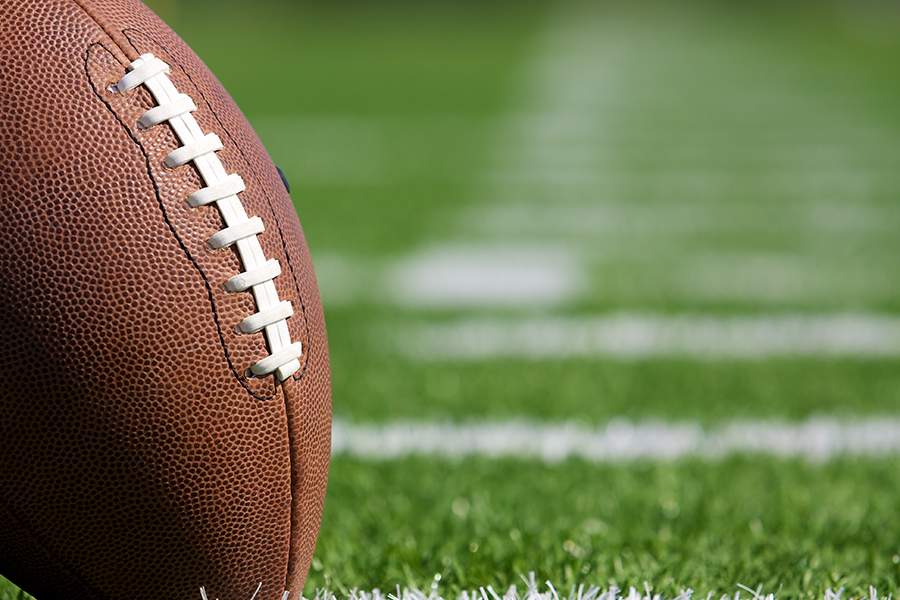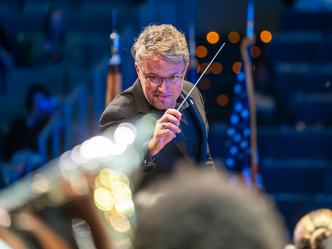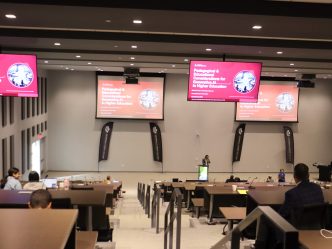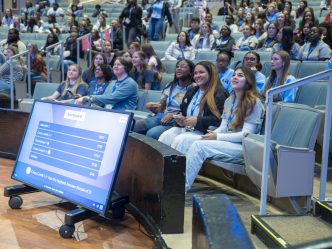Wesley Meares, PhD, and Lance Hunter, PhD, are avid sports fans and were intrigued by the U.S. Supreme Court’s June 2021 ruling in NCAA v Alston that allowed student-athletes to profit from their Name, Image and Likeness.
Before the ruling, student-athletes were prohibited by the NCAA from entering into contracts to promote products or brands.
Meares, director of the Master of Public Administration program in AU’s Katherine Reese Pamplin College of Arts, Humanities, and Social Sciences, collaborated with Hunter, Martha Ginn, PhD, and William Hatcher, PhD, on a paper, “NIL and Higher Education: An Exploration of the Early Impact of NIL on Fundraising and Competition in Universities and Athletic Departments,” which was published in the Journal of Intercollegiate Sport.
The paper examines NIL’s effects on university and athletic fundraising. In surveying chief financial officers and athletic department directors in universities that make up the power and non-power conferences, they aimed to understand university officials’ perceptions regarding the early impact NIL is having on higher education. The survey results offer valuable guidance on the desire for regulation of NIL to ensure it benefits both student-athletes and universities.
Hunter points to the Ed O’Bannon court case where O’Bannon filed suit against the NCAA and Collegiate Licensing Company, alleging the NCAA’s amateurism rules prevented student-athletes from being compensated for the use of NIL and were an illegal restraint of trade under Section 1 of the Sherman Act, 15 U.S.C. 1.

“That really opened the door for student-athletes to be able to receive money for their name, image and likeness,” Hunter said. “Another court case solidified that, and now there’s an ongoing court case looking to have a settlement between the plaintiffs who are seeking NIL compensation for past players.”
According to Meares and Hunter, statistics acquired from Opendorse show an estimated $1.175 billion was spent on NIL between 2023 and 2024. Of the projected NIL spending over the next year, $726.2 million will be distributed to collegiate football across all levels with $595 million of that going to power conference football teams.
“Through collectives, players were getting paid well, and that led to a discussion of where is all of this money coming from. Now you’re having these additional stresses on your donors because you never had to ask for NIL money before this. The question we raised was, ‘How is this going to impact the university and athletic department funding?’”
Wesley Meares, PhD
Men’s basketball is projected to earn $303 million with women’s basketball netting $59.4 million.
One example of the impact NIL has had on other industries is the much-anticipated release of EA Sports’ first college football game in nearly a decade. Meares said EA had to enter into a financial arrangement with the players featured in the game before they could proceed. He also said a tier system is in place with the universities and an agreed payout for players that opt in to be playable in the game.
Additionally, athletes can enter into contracts themselves with companies or collectives.
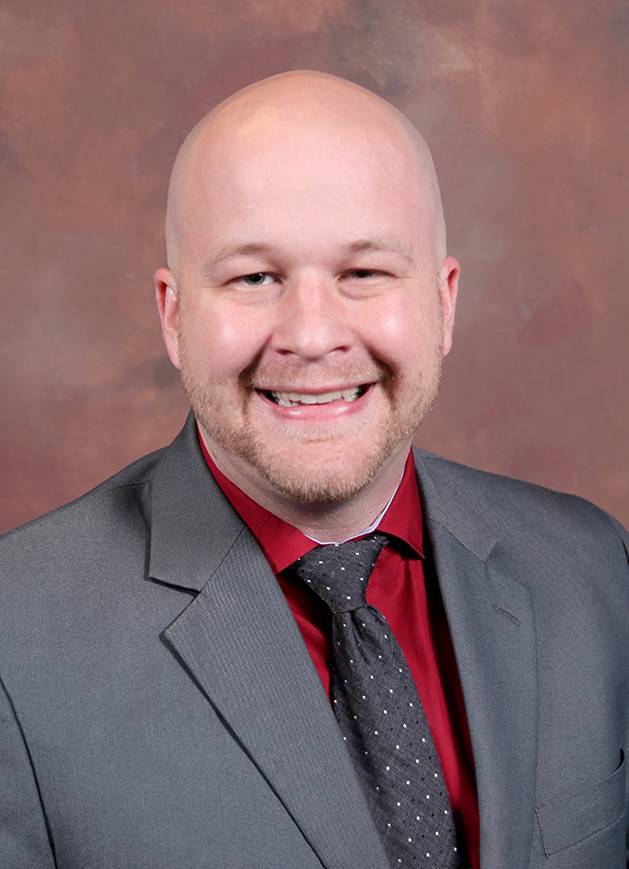
“Someone like Livvy Dunn is one everybody thinks of where she’ll go and promote a brand or a product, and then she gets paid for each of those endorsements or has a structured deal,” Meares said. “A lot of factors go into how much they get paid depending on their social media following and the schools they’re at.”
Another area of the paper’s focus is how NIL is impacting fundraising. Meares and Hunter said there are collective organizations associated with universities charged with raising money to spend on NIL for player recruitment and retention purposes. The conversation surrounding NIL accelerated with Texas A&M University’s highest-rated recruiting class from 2022, which was perceived to be heavily influenced by NIL funds.
“Through collectives, players were getting paid well, and that led to a discussion of where is all of this money coming from,” Meares said. “Now you’re having these additional stresses on your donors because you never had to ask for NIL money before this. The question we raised was, ‘How is this going to impact the university and athletic department funding?’”
Hunter suggested that possible issues colleges will be facing soon are donor fatigue and how non-revenue-generating sports might be impacted.
“Let’s say you have a high-end donor that is giving to the athletic department or to the university. Now, with the addition of NIL, they’re being asked to not only give to the university but also for NIL purposes, as well,” Hunter said. “We saw a decent amount of respondents in our survey say that money going to NIL at times can take away from money going to other programs or projects in the university, such as upgrading or building new facilities, in which donors are asked for money to support those projects. But if donors are giving all this money for NIL to recruit players, that’s a lot less money for other projects.”
Meares and Hunter said some athletic directors and chief financial officers who responded to the survey said NIL has led to opportunities for smaller businesses within their communities to become engaged.
However, plenty of questions remain about the fairness of NIL as there are no federal regulations around it yet. The pair mentioned there are 50 states with 50 potential systems on how they will handle it.
They highlighted the fact that student-athletes are finally getting paid for their NIL, which is a positive, but also noted many survey respondents feel the playing field is uneven and there is a lack of transparency.
“There are still a lot of questions and interest into looking at how we can properly regulate this,” Meares said.
 Augusta University
Augusta University
